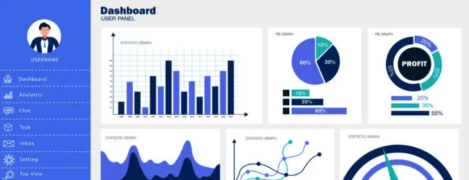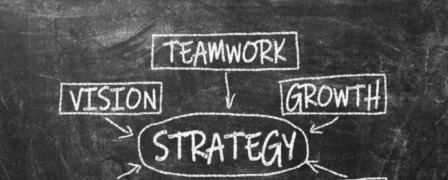Mapping the Customer Journey: Best Practices and Tools

Mapping the customer journey is a vital step in understanding how customers interact with your business, from the moment they first hear about you to their post-purchase experiences. For small teams, this process provides actionable insights into pain points and opportunities for improvement, ensuring every touchpoint delivers value.
In this guide, we’ll cover best practices for mapping the customer journey and recommend tools to make the process manageable and effective.
What is Customer Journey Mapping?
A customer journey map is a visual representation of the steps a customer takes to interact with your business. It outlines touchpoints, emotions, and behaviors across the stages of their journey, such as:
- Awareness: Learning about your brand or product.
- Consideration: Evaluating options and researching your offerings.
- Purchase: Completing the transaction.
- Post-Purchase: Engaging with your brand after buying, including support and loyalty-building interactions.
Why It Matters:
- Highlights pain points and friction in the journey.
- Identifies areas to enhance customer satisfaction.
- Aligns teams around a customer-first mindset.
Best Practices for Mapping the Customer Journey
1. Define Your Objectives
Start by clarifying the purpose of your customer journey map. Are you trying to improve a specific touchpoint, enhance overall CX, or drive loyalty?
Example: A small SaaS business may focus on improving the onboarding process to reduce churn during the first 30 days.
2. Identify Your Customer Personas
Understand who your customers are and group them into personas based on demographics, goals, and behaviors. Each persona may have a unique journey.
Example Personas:
- Time-Pressed Project Manager: Needs quick solutions and minimal friction.
- Budget-Conscious Startup Founder: Looks for value and clear ROI.
3. Map the Stages of the Journey
Break down the journey into key stages, such as:
- Awareness
- Consideration
- Purchase
- Onboarding
- Retention
For each stage, ask:
- What is the customer trying to achieve?
- What challenges or frustrations might they face?
- What emotions are they experiencing?
4. Identify Touchpoints
Touchpoints are interactions between the customer and your business. List all the ways customers engage with your brand at each stage.
Example Touchpoints:
- Awareness: Social media ads, blog posts, or referrals.
- Purchase: Website checkout process or in-store experience.
- Post-Purchase: Customer support, email newsletters, or product tutorials.
5. Include Customer Emotions
Map how customers feel at each stage. Understanding their emotional journey helps you create more empathetic and impactful interactions.
Example:
- Awareness: Excitement about discovering a new solution.
- Consideration: Uncertainty about pricing or features.
- Support Interaction: Relief after resolving an issue quickly.
6. Involve Your Team
Collaborate with team members across departments, such as marketing, sales, and support. Each team provides unique insights into customer behaviors and challenges.
Tip: Small teams can hold workshops or brainstorming sessions to map the journey collectively.
7. Validate with Customer Feedback
Gather feedback directly from customers through surveys, interviews, or reviews to ensure your map reflects real experiences.
Example: A small e-commerce brand interviews recent customers to identify frustrations during checkout, like unclear shipping options.
8. Focus on Pain Points and Opportunities
Use the map to pinpoint areas where customers experience friction. Then, brainstorm ways to improve those touchpoints.
Example: If customers struggle with understanding your pricing, create a clearer pricing page or a comparison tool.
9. Keep It Simple and Actionable
Avoid overwhelming complexity. Focus on creating a clear, concise map that your team can easily understand and act upon.
Tip: Use visuals like flowcharts or diagrams to present the information.
10. Continuously Update Your Map
Customer journeys evolve with changing behaviors and technologies. Regularly review and update your map to keep it relevant.
Top Tools for Customer Journey Mapping
1. Lucidchart
A cloud-based diagramming tool perfect for creating customer journey maps, flowcharts, and visuals.
- Best for: Small teams that want a collaborative tool with easy sharing.
2. Miro
An online whiteboard platform with templates for customer journey mapping.
- Best for: Teams that prefer visual brainstorming and real-time collaboration.
3. UXPressia
A dedicated customer journey mapping tool that integrates personas, touchpoints, and emotions.
- Best for: Small teams focused on detailed, data-driven maps.
4. HubSpot
A CRM tool that tracks customer interactions across touchpoints and generates reports for journey mapping.
- Best for: Teams using CRM data to inform journey maps.
5. Google Sheets or Excel
A budget-friendly option for creating simple, customizable journey maps.
- Best for: Small teams needing a straightforward approach without additional costs.
6. Adobe XD or Figma
Design tools that allow you to create highly customized and visually appealing journey maps.
- Best for: Teams with design expertise seeking polished, professional visuals.
Real-World Example of Journey Mapping
Scenario: A small online subscription box service wants to improve customer retention.
- Objective: Reduce churn during the first three months.
- Stages Identified:
- Awareness: Social media ads and referrals.
- Consideration: Website and reviews.
- Onboarding: Welcome email and first box delivery.
- Retention: Monthly subscription experience and customer support.
- Pain Point Discovered: Customers feel overwhelmed by product selection during onboarding.
- Solution Implemented: Introduced a simple quiz to personalize recommendations, creating a smoother experience.
Result: Customer satisfaction scores increased by 15%, and churn decreased by 10%.
Conclusion
Mapping the customer journey is a powerful way to uncover insights, improve touchpoints, and create exceptional experiences for your customers. For small teams, focusing on best practices and leveraging the right tools can make the process manageable and impactful.
By understanding your customers’ needs, emotions, and pain points, you can design a journey that not only meets their expectations but also builds loyalty and drives growth.
Ready to map your customer journey? Start by identifying your key personas and touchpoints, then use tools like Lucidchart or Miro to create your map. Small steps lead to big improvements!







